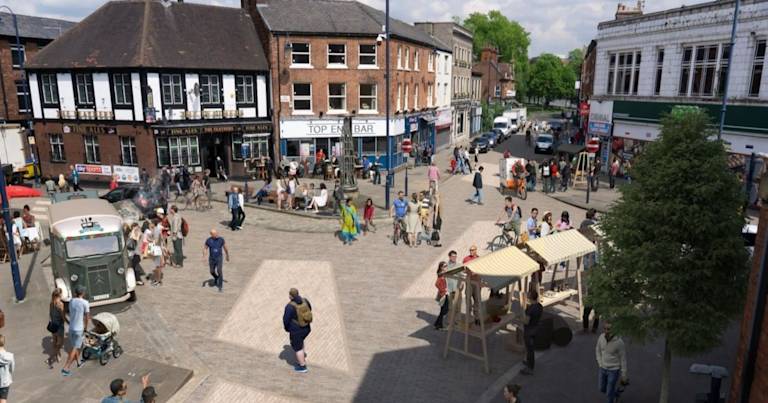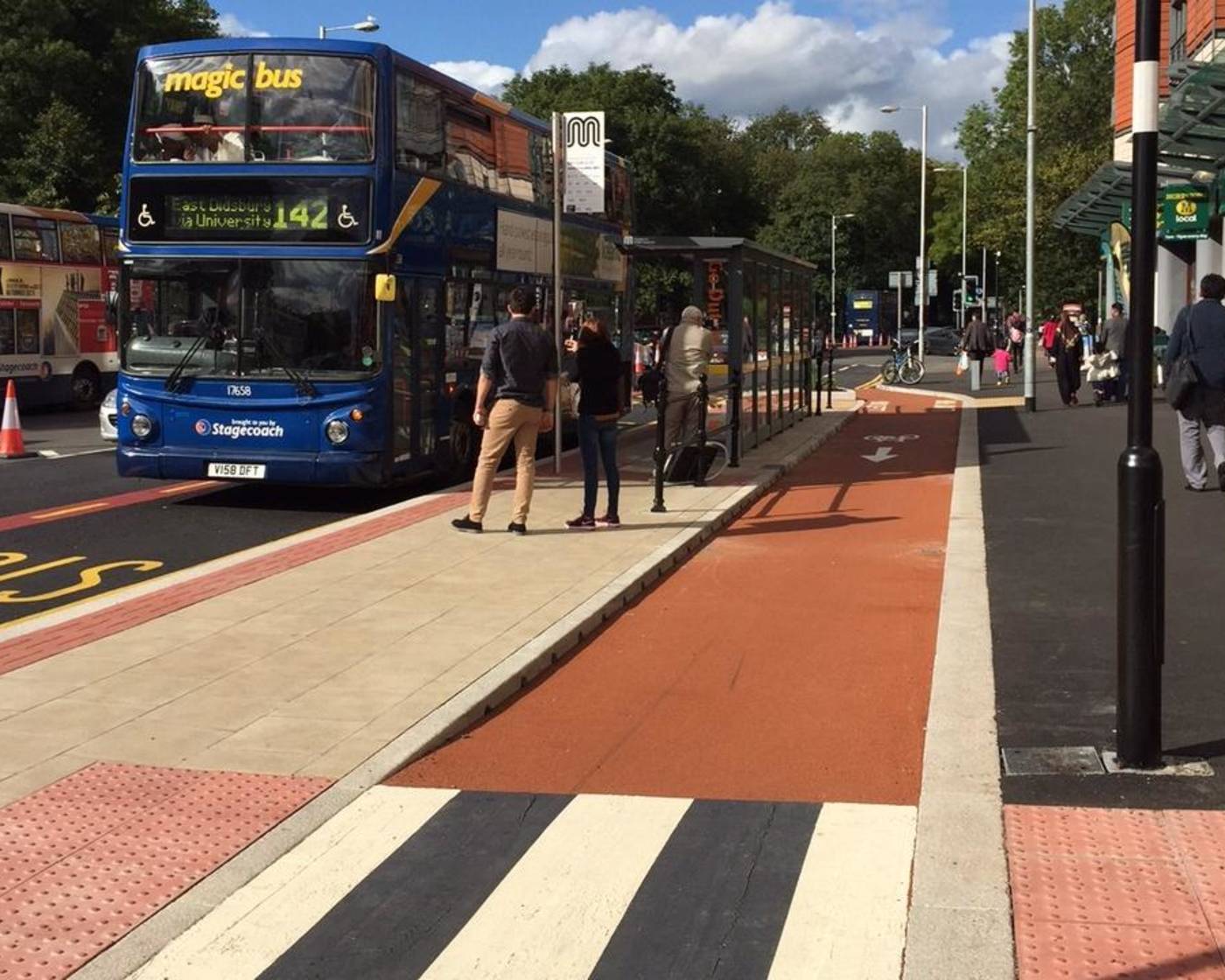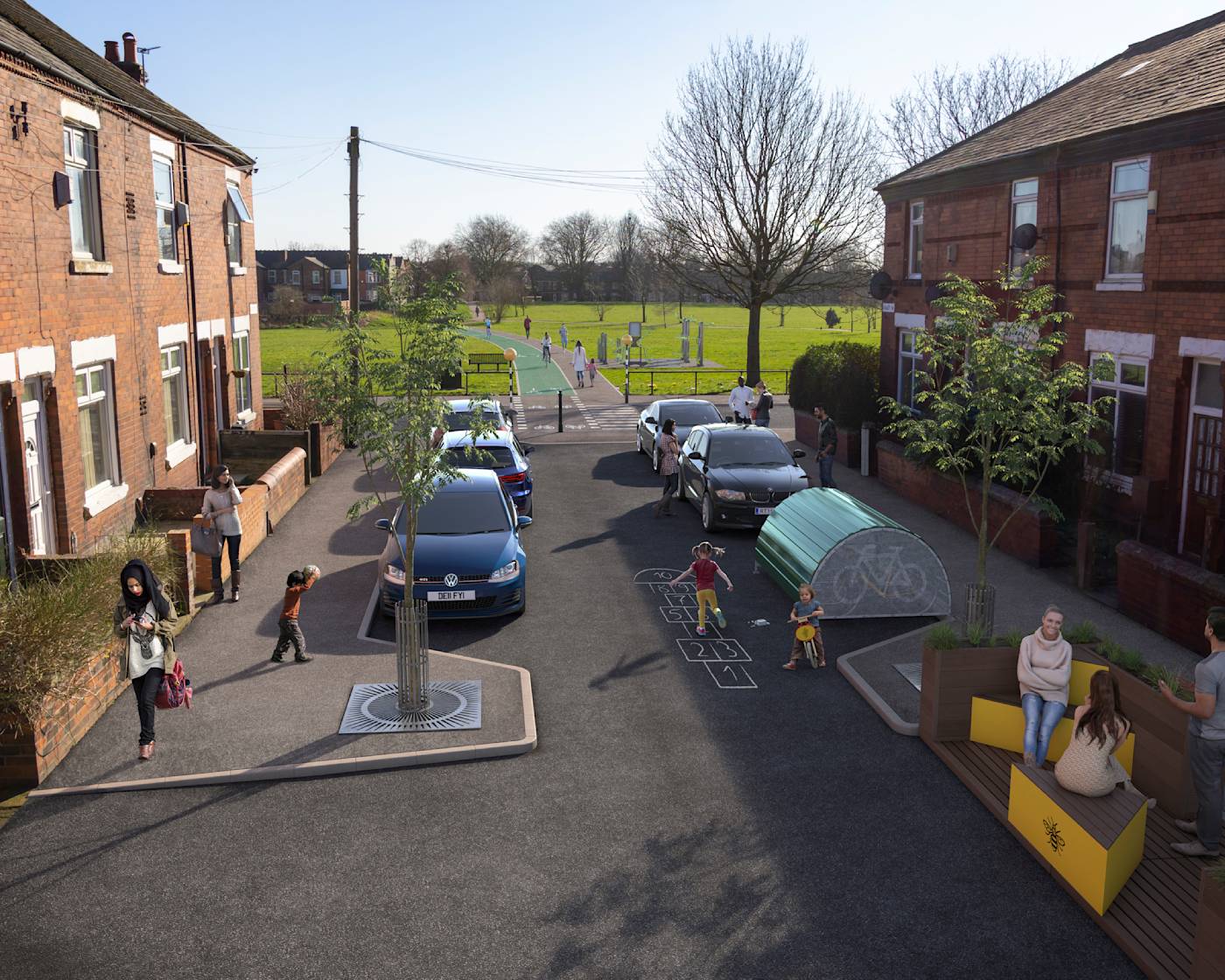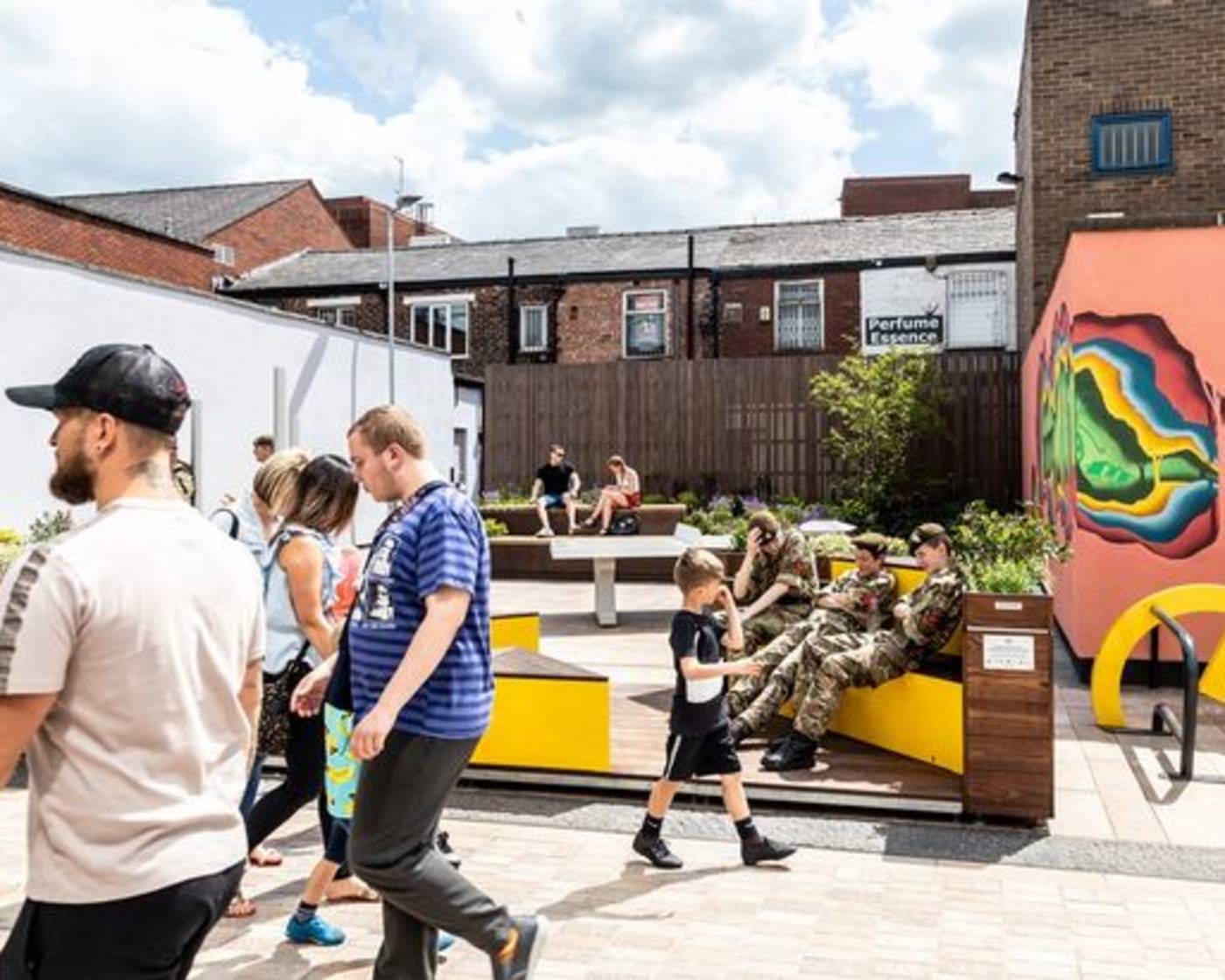
Understanding the upgrades to your neighbourhood
What's a bus stop bypass?
A bus stop bypass involves routing the walking and cycling route behind the bus passenger boarding area to maintain the separation of people on foot and by bike from motor traffic. These are an important safety feature of segregated routes.
Where a segregated route approaches a bus stop, it is routed around the back of the passenger boarding area, allowing people travelling on foot and by bike to ‘bypass’ the bus stop.
Some bus stop bypasses include design features that encourage people cycling to slow down and make them more likely to ride single file such as chicanes, ramps or a narrowing of the cycle track. Passengers cross the segregated route when it is safe to do so, using a crossing point that is marked by special paving and coloured surfacing. If a person walking or on a bike sees a person crossing ahead of them, they should slow down or stop to let them pass before continuing.
On buses servicing bus stops with bypasses, audio announcements and visual alerts remind passengers that they are getting off the bus onto a bus stop where there is an adjacent cycling and walking route nearby. The alerts also encourage passengers to use the marked crossings points.

What is a CYCLOPs junction?
Designed by Greater Manchester engineers, CYCLOPS stands for Cycle Optimised Protected Signals. The unique design of the CYCLOPs junction completely separates pedestrians and cyclists from motor traffic at junctions, reducing the possibility of collisions or conflict. Pedestrians are also able to get where they want to be in fewer stages with more space to wait than on other junction designs.
The main difference between the CYCLOPS junction and traditional UK junction designs is that cyclists are offered a safer route around the junction.. They are no longer required to position themselves on the nearside of the lane, allowing vehicles to pass on their offside which is often the cause of so-called ‘left hook’ incidents, where cyclists going ahead are struck by a vehicle turning left from the same lane. Read more here.
What's a modal filter?
A modal filter is a road design that restricts the passage of certain types of vehicle, stopping things like rat-running. This is often done using planters or bollards but can also be done using street changes like road narrowing. It is an approach often used to create low traffic neighbourhoods, or Active Neighbourhoods as they are known in Greater Manchester.

What's an Active Neighbourhood?
Also known as low traffic neighbourhoods and Mini-Hollands, an Active Neighbourhood is a place where the movement of people is prioritised over cars. Typically created using planters or bollards to stop through access, it’s simply about creating safe, attractive space for people to spend time chatting or for children to play. The changes also make it easier to get around on foot and by bike. All these things can have dramatic positive effects on air pollution, congestion, residents’ health and wellbeing, and safety on residential streets. This is also about stopping people using residential roads as a cut-through. Residents will still be able to access their homes by car and emergency vehicles will still be able to drive onto the street.
While the active neighbourhood primarily serves the people that live within it, these new cyclable and walkable areas will contribute to the wider Bee Network plans, creating a joined-up cycling and walking network for all residents across the city-region.
What's a parklet?
Typically installed within parking bays or simply on-road, the 'parklet' concept originated in San Francisco. In simple terms, a parklet is a mini-park installed on-street that features seating, greenery and cycle parking. Greater Manchester’s first parklet was installed on Bridgefield Street in Stockport in June 2019. Monitoring has shown that 98% of people feel that the parklet has improved the street and 95% of visitors say they would like more parklets installed across Greater Manchester. 84% of people who used the parklet reported a greater sense of wellbeing. Average time spent on the street increased from seven to 12 minutes. Parklets are designed to be as flexible as possible and can be customised depending on the location to include seating, greenery, open-air bike parking, covered bike parking, a hire station and even basic maintenance tools. Parklets give people a reason to get out and about in the great outdoors and make their experience more pleasant. Regardless of size, parklets can make a big difference to our high streets, providing additional seating for cafes and restaurants, and a unique area to socialise and play in, or just to relax and rest.

What's the 12 year old and double buggy test?
The Bee Network will set new world class standards in design, safety and accessibility. We are building a network that will be suitable for competent 12 year olds to ride to school, to the shops or to their friends’ houses. And everything we build will also work for people travelling with a double buggy. That means that it will also be attractive to older people, people with mobility issues, people riding trikes or with cargo bikes and people in wheelchairs. Our standards are set out in our Greater Manchester interim street design guide.
What's a signalised parallel crossing?
A signalised parallel crossing means that people travelling on foot and by bike can cross the road separately from each other, increasing safety and making it easier to carry on their journey. This type of crossing is also locally known as a 'sparrow crossing'.